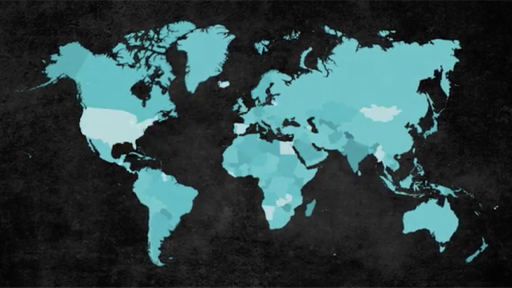3.1 The Outer Space Treaty
The Outer Space Treaty (OST), or the ‘Treaty on Principles Governing the Activities of States in the Exploration and Use of Outer Space, including the Moon and Other Celestial Bodies (1967)’, was developed at the United National (UN) General Assembly to outline the responsibilities and liabilities of ‘states parties’ engaged in the exploration or use of space.
Watch Video 5, which shows the signing of the OST within the White House in the USA.
At the time of its signing, there were only two major players involved in space, the USA and the USSR (succeeded by the Russian Federation) and some of the motivation for the OST came from their desire to explore options for using space for military purposes (e.g., nuclear weapons and intelligence gathering), however many states viewed signing of the OST as a way of achieving international cooperation in space and as of May 2025, 116 States, including the United Kingdom, China, and the United States, had signed the Treaty.
Importantly, states are responsible for ensuring that their space activities, including those of government and non-governmental actors, adhere to the Treaty. This means that states are responsible for the actions of commercial entities operating within their borders.
The OST was developed and is overseen by the United Nations Committee on the Peaceful Uses of Outer Space (COPUOS). In the next videos (Videos 6 and 7) you will learn more about COPUOUS and the Outer Space Treaty.

Transcript: Video 6 Niklas Hedman explains COPUOUS.
And I would like to add that Coopers was founded in 1958 and today it has 102 states members.

Transcript: Video 7 Does space need laws
-
How is the OST enforced?
-
It is a challenge to enforce the OST, but political pressure encourages states to comply. Use of space is dependent on global co-operation and following the rules is in everyone’s interest – even those operating with a commercial interest. It does, however, need continual review and refresh.
The OST contains a number of Articles (sections) relating to different aspects of the use of space, but Article IX provides the legal basis for principles around Planetary Protection. Every state then organises their governance and implementation of planetary protection in a different way. For example, in the United Kingdom, the government established a Planetary Protection Advisory Panel (PPAP), which works with the UK Space Agency, the Civil Aviation Authority (CAA), and academic experts to ensure that UK-licensed space missions adhere to the principles of planetary protection.
Internationally, planetary protection is overseen by the Committee on Space Research (COSPAR) Panel on Planetary Protection.
